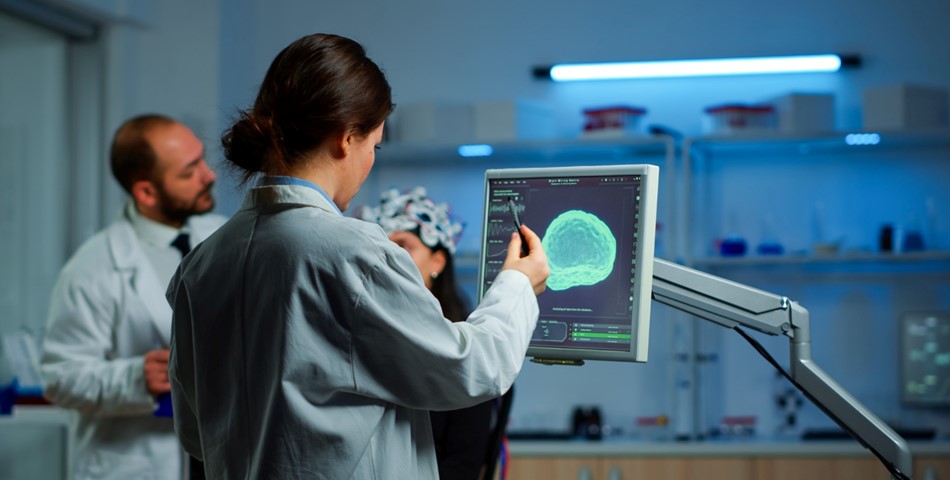Mayo Clinic neurosurgeons are pioneering innovative approaches for the treatment of chordoma, a rare but locally aggressive cancer. Chordoma is notoriously difficult to treat due to its high recurrence rate and resistance to conventional radiation and chemotherapy.
"Optimal surgical resection requires a neurosurgeon with specialized training in primary spinal tumors," says Oluwaseun O. Akinduro, M.D., a neurosurgeon at Mayo Clinic in Jacksonville, Florida. "In addition to surgical expertise, we are also exploring ways to make these tumors more responsive to radiation therapy."
As a leading tertiary center, Mayo Clinic provides specialized care and cutting-edge research for this understudied disease. A multidisciplinary team is available at all three Mayo Clinic campuses to offer personalized treatment. Early referral to such centers is strongly recommended.
"Physicians who identify bright spots in the clivus, spine, or sacrum on T2-weighted MRI scans should suspect chordoma," Dr. Akinduro advises. "It's crucial to refer patients to us before conducting a biopsy. If a biopsy is performed improperly, it could interfere with future tumor resection."
Expert Care and Leading-Edge Research
The gold standard for treating chordoma is en bloc resection with wide tumor margins. This procedure requires meticulous surgical planning, as the tumor can involve an entire spinal level or more. "We must navigate around the tumor completely and remove it in one piece," Dr. Akinduro explains. "It's a highly complex, time-consuming surgery."
Chordoma’s midline growth pattern poses an additional challenge, often causing tumors to invade critical neural, vascular, and bone structures. Mayo Clinic’s multispecialty approach ensures that vascular, thoracic, and plastic surgeons collaborate closely with oncologists and radiation specialists to optimize patient outcomes.
"Chordoma is an extremely challenging tumor requiring multidisciplinary care," says Dr. Akinduro. "At Mayo Clinic, we bring together leading experts who are solely focused on achieving the best results for our patients."
If achieving tumor-free margins through surgery isn’t possible, high-dose proton-based radiation therapy is the next step. A Mayo Clinic study published in Neurosurgical Focus found that patients receiving proton-based therapy had a significantly lower recurrence rate of 40%, compared to 88% for those who received standard photon radiation therapy.
Enhancing Radiation Sensitivity With Novel Therapies
To further improve radiation therapy effectiveness, Mayo Clinic researchers are investigating the role of yes-associated protein (YAP), a key regulator of gene transcription and cell proliferation. Research conducted in Dr. Akinduro’s spinal oncology laboratory has identified verteporfin, a U.S. Food and Drug Administration-approved medication, as a potent YAP inhibitor in xenograft laboratory models. These findings are described in a preprint manuscript on bioRxiv.
"Verteporfin increases chordoma’s sensitivity to radiation by inhibiting the DNA damage repair cascade," Dr. Akinduro explains. "Additionally, the drug promotes the accumulation of tumor cells at the G2-M checkpoint, which is the phase where they are most susceptible to radiation damage."
However, verteporfin has a short half-life, which presents a challenge for sustained efficacy. To address this, Mayo Clinic researchers have developed a novel microparticle delivery system that allows for the controlled release of verteporfin over time. This prolonged exposure increases the chances of targeting tumor cells when they are at their most vulnerable stage.
"Since chordomas grow slowly, the probability of any given cell being in the G2-M checkpoint at a particular time is low," Dr. Akinduro notes. "By extending the therapeutic concentration of verteporfin, we can potentially increase the fraction of tumor cells in G2-M, thereby improving radiosensitivity. Our preliminary results are promising, and we are continuing research to validate our findings. Ultimately, our goal is to develop a patient-ready treatment that enhances the effectiveness of radiation therapy."
A Synergy of Clinical Care and Research
The integration of expert clinical care with groundbreaking research is a hallmark of Mayo Clinic’s approach. "As an academic institution, our mission goes beyond patient care," Dr. Akinduro states. "We are dedicated to translational research that directly impacts treatment outcomes. By combining surgical expertise with scientific innovation, we aim to improve the prognosis for patients with chordoma."
Through this commitment to research and multidisciplinary collaboration, Mayo Clinic is advancing the standard of care for chordoma, offering hope to patients with this challenging disease.










